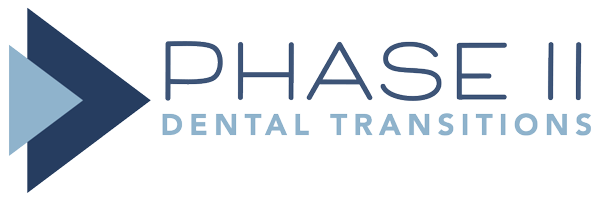
Lynne Gerlach DDS, FICD, FACD, has run her own busy practice for 26 years and then became a transition consultant with Phase II Dental. In this Q & A Interview, she shares her best tips and advice for doctors who want to sell their successful practices and are struggling to determine an appropriate asking price.
Phase II: The American Dental Association (ADA) compiles data on practice sales statistics and many doctors use this data as a guide to determine the value of their practice without a proper valuation. Why is this strategy a weak beginning to transitioning my own practice?
Lynne: Our firm works with Certified Valuation Analysts to determine the important financial considerations of tangible and intangible aspects of any dental practice. Using ADA sales statistics is not an accurate representation of your individual practice. The ADA compiles all sizes of practices with various models, overheads and locations. This type of rule of thumb percentage to revenue to guide the value does not begin to tell the full story.
Imagine 2 dental practices, $1.5 million in revenue, one rural and one urban. The overhead is likely vastly different impacting the profitability and thus the values of these practices. Equipment condition, technology and practice management can also play a role in the value of a practice.
A comprehensive valuation utilizes different methodologies appropriate for the age of the practice, the equipment and lease-held improvements. The revenue sources in a practice, the array of procedures and market trends all impact a valuation.
Phase II: What could happen if I use the ADA rule of thumb approach to determine my asking price?
Lynne: We see many doctors that start their transition in this manner and initiate the transition process on their own. This type of approach could actually leave money on the table for the seller, erode the confidence of the buyer and have CPA’s and lenders that advise the buyer steering them elsewhere. A thorough analysis and strategy is like a comprehensive exam and treatment plan for your patients that sets up the process for success.
Often doctors have a candidate in mind for their practice. Sometimes it’s a family member or even a patient they have mentored through the years. As the time for transition comes into view, a hap hazard presentation of value without a clear and accurate value that reflects the marketplace can cause that hand-picked buyer hesitancy and your favorite candidate walks away.
Phase II: Since the valuation is the first step in the process, what can a doctor do to improve their valuation?
Lynne: Meeting with a transition consultant 2-5 years in advance of the change is ideal. This allows for a timeline and strategy to be set. Short of that, consider your practice’s appearance. There are many buyers looking for move in ready practices. Is yours clean and relatively up to date? Is your accounts receivable being managed appropriately with credits returned to the patients in a timely manner and financial policies in place? Do your patients have recorded comprehensive treatment plans with thorough notes and diagnosis? Is your team working well together and focused on the best outcomes for patients and the business? Re-energizing the doctor/leader of the practice to successfully tackle these projects can increase the production, profitability and marketability of your practice.
I would not recommend a rebuild or all new equipment prior to a sale but upgrading the management or radiography system might be worthwhile. A thorough valuation helps determine sale readiness and marketability. We encourage docs that want to sell their practice to schedule a Pre-Transition Interview to discuss your personal situation and goals.
